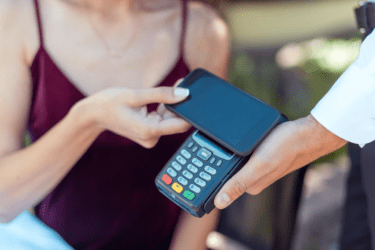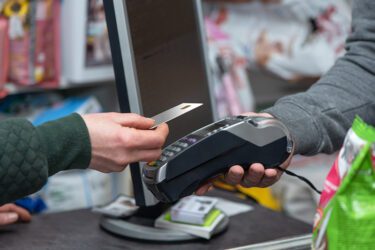Updated 4/23/2024
Despite its undeniable convenience and security features, contactless commerce and mobile payments still face misconceptions that deter many potential users. Today, we’re here to debunk some of the most prevalent myths surrounding this cutting-edge technology.
In the realm of modern commerce, one persistent myth is the security concern. New consumers often hesitate to embrace contactless payments due to fears of compromised security. However, the reality is quite the opposite: contactless commerce is not just safe, but it’s also one of the most secure methods of payment available today.
Electronic Pickpocketing
Concerns about electronic pickpocketing persist in discussions about contactless commerce. While some fear that thieves equipped with NFC card readers can swipe contactless payment information, the reality is more reassuring. Certain smartphone apps may access limited data from contactless cards, typically restricted to account numbers and expiration dates. However, legitimate NFC reads require a valid POS terminal from a trusted bank, within a secure EMV environment. Even if a POS terminal were stolen, transactions would be traceable, and stolen terminals promptly reported and blocked by retailers. Overall, the risk of electronic pickpocketing is minimal compared to physical card theft.

Duplicating Contactless Cards
Another misconception is the ease of duplicating contactless cards. Despite fears of thieves intercepting contactless information, the reality is different. During contactless transactions, the card or device generates a unique, one-time code, backed by advanced encryption technology. This dynamic code is virtually impossible to replicate, rendering attempts at duplicating contactless cards futile.
Losses From a Stolen Card
Contrary to misconceptions, liability for fraudulent transactions with stolen contactless payment cards isn’t a significant concern. Reporting unauthorized activity prompts banks to reimburse for fraudulent purchases, akin to traditional card policies. Moreover, contactless transactions often require a PIN for larger amounts, bolstering security against financial losses.
Connected Devices and Contactless Payments
 Security concerns surrounding stolen connected devices, like smartphones or smartwatches, are mitigated by contactless commerce design. Devices store minimal information, and card numbers are concealed using tokenization. Additionally, requiring a PIN for the first transaction of the day via smartwatches adds another layer of security. In case of loss or theft, the remote payment feature disabling minimizes the risk of unauthorized transactions.
Security concerns surrounding stolen connected devices, like smartphones or smartwatches, are mitigated by contactless commerce design. Devices store minimal information, and card numbers are concealed using tokenization. Additionally, requiring a PIN for the first transaction of the day via smartwatches adds another layer of security. In case of loss or theft, the remote payment feature disabling minimizes the risk of unauthorized transactions.
Contactless Payment Security
Contactless payments offer robust security measures, surpassing traditional magnetic strip cards. EMV chip technology and Dynamic Data Authentication (DDA) enhance protection against fraud. Each contactless transaction generates a unique cryptographic code, ensuring card authenticity and preventing unauthorized use. Encryption and dynamic data technologies make contactless payments more secure than physical cards, providing peace of mind to consumers and retailers.
Despite lingering concerns, it’s crucial to acknowledge the numerous benefits of contactless commerce, continuously evolving to enhance security and convenience for consumers and businesses alike. Talk to an expert or request a demo of RCS’s latest contactless payment release today!



